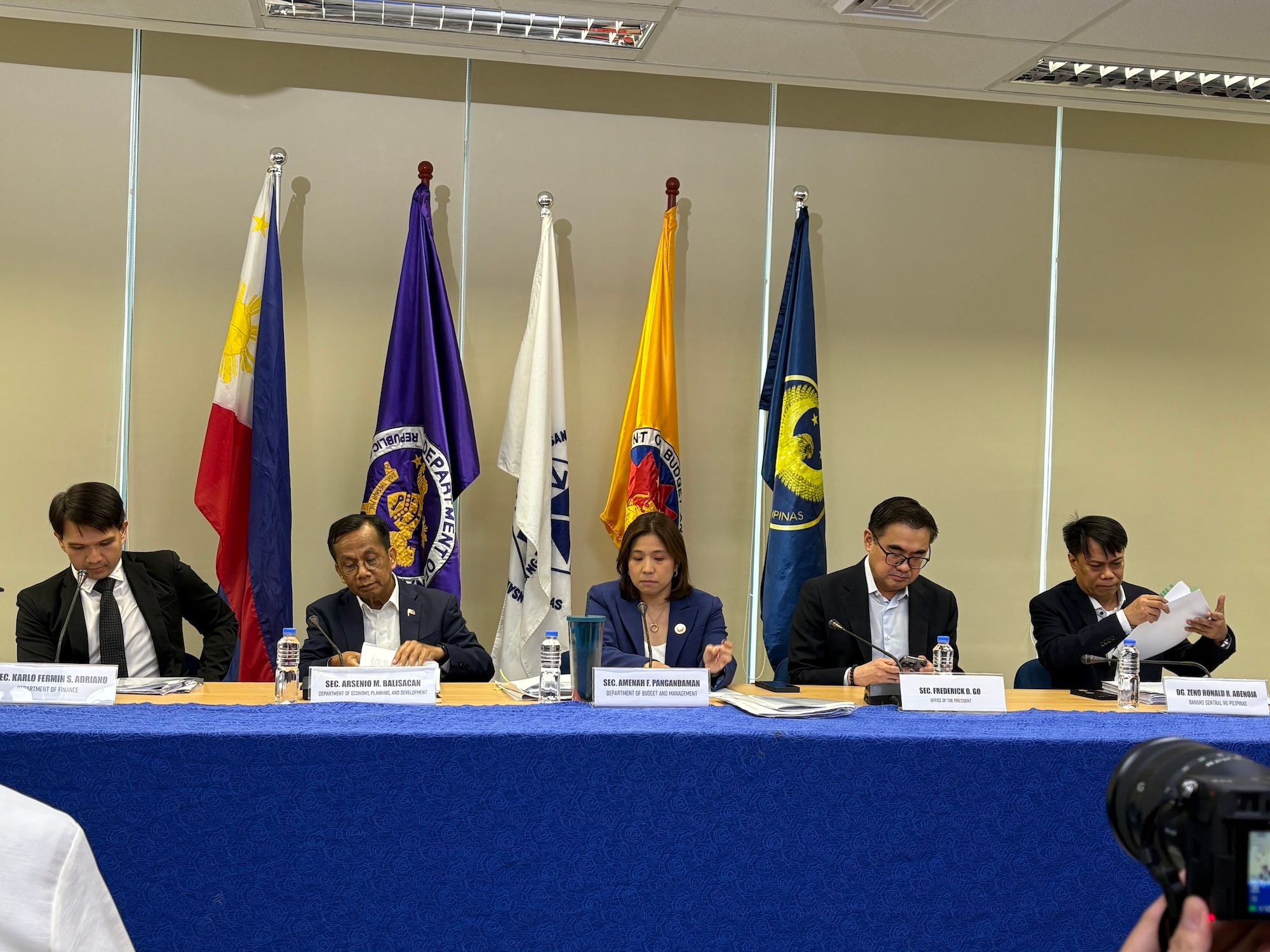Physical Address
304 North Cardinal St.
Dorchester Center, MA 02124
Physical Address
304 North Cardinal St.
Dorchester Center, MA 02124

This is AI generated summarization, which may have errors. For context, always refer to the full article.
Budget Secretary Amenah Pangandaman also announces that the government set its 2026 budget proposal to P6.793 trillion, 7.9% higher than this year’s P6.326 trillion
MANILA, Philippines – The Philippine government on Thursday, June 26, announced it reduced its economic growth targets amid what it described as evolving global developments.
The Development Budget Coordination Committee (DBCC) lowered its 2025 economic targets to 5.5% from 6.5%. It also narrowed its 2026 to 2028 growth targets to 6% from 7%.
Budget Secretary Amenah Pangandaman said the revisions take into account global uncertainties such as the escalation of tensions in the Middle East and the imposition of the United States’ reciprocal tariffs.
The Marcos Jr. administration has missed its gross domestic product (GDP) growth targets for two years, with the economy only growing 5.4% in the first quarter as the government frontloaded projects before the election spending ban.
Despite falling short of its initial targets, Socioeconomic Planning Secretary Arsenio Balisacan said the economy remains poised to meet the 5.5% to 6.5% threshold this year amid an expected boost in domestic consumption and a lower trade deficit.
“The low interest rates, the policy rates declining, the inflation reaching a very low level, the robust labor market. So those will stimulate and encourage private spending, particularly consumption,” Balisacan said.
Balisacan added the widening trade deficit in the first quarter was due to the frontloading of imports amid threats of US President Donald Trump’s reciprocal tariffs. But with a competitive peso-dollar exchange rate, the country’s chief economist is confident Philippine exports will rebound later in the year.
Pangandaman also announced that the government is set to propose a P6.793 trillion budget for 2026, 7.9% higher than this year’s P6.326 trillion.
The Department of Budget and Management (DBM) initially announced that budget proposals from government agencies reached P10.1 trillion. But Pangandaman said the DBM used frameworks to determine which projects to prioritize due to limited fiscal space.
“For the next three years of the PBBM administration, we will focus on [the] social services sector, mainly human development. That’s investments on human capital, health, social protection — infrastructure will remain the same, 5% to 6%, and digital infrastructure,” she said.
Pangandaman added that this is part of the government’s goal to reduce its fiscal deficit to 4.3% by 2028 from this year’s 5.5%.
Pangandaman said revenue collections are expected to increase steadily in the last half of the Marcos Jr. administration, and are expected to reach 16.3% of the country’s gross domestic product (GDP) by 2028.
“Key drivers include the implementation of recently enacted revenue reforms, such as the VAT on non-resident digital service providers and capital markets efficiency promotion as well as sustained improvements in tax administration, compliance enforcement, and digitalization initiatives,” she said.
Finance Assistant Secretary Karlo Fermin Adriano said that the government also adjusted the collection targets of the Bureau of Internal Revenue and Bureau of Customs this year due to the GDP growth figures.
Adriano added that the finance department expected to collect more non-tax revenue, such as dividends from government-owned and controlled corporations.
The DBCC — which includes the Finance Department, Budget Department, Department of the Economy, Planning, and Development, the Bangko Sentral ng Pilipinas — is responsible for reviewing the Philippine macroeconomic assumptions and fiscal program. – Rappler.com